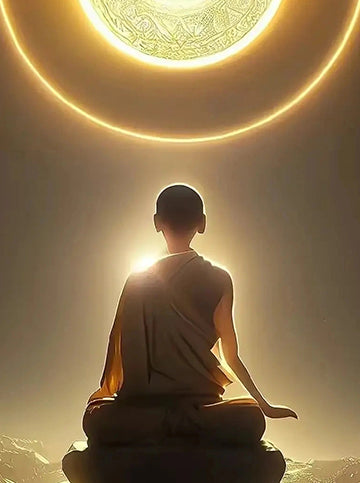A generic form of Feng Shui doesn't exist. Instead,a number of different approaches interpret environments, but they all focus on connecting with the energy of a place. Some schools of thought investigate living and working spaces with respect to their orientation to the magnetic field of the Earth. Other schools concentrate on the symbolism of terrain and intuition. Each of the various schools of thought, however, ends up with the same result. There's the Black Hat Sect School, a hybrid of Tibetan Buddhism, Taoism and Feng Shui. And the Flying Star School, where practitioners believe that over time the luck of any dwelling will change according to intangible forces, and Intuitive Feng Shui, with devices more familiar to our modern Western lifestyle. The most widely used schools are the Form and Compass Schools.Initially, the doctrines of these two schools developed independently, but today their difference is no longer very apparent.
The Form School
Sensibilities of ancient people living and working on the land were finely tuned, and their knowledge of the natural world endowed them with an instinct for suitable sites to grow their crops.
The Form School, the oldest school of Feng Shui, focuses on the contours of the physical landscape-shape, size and position - and the relationship between these natural formations and buildings. The four compass directions are symbolized by four celestial animals, representing the perfect arrangement. Feng Shui masters believe that the four entities must be present for a building to be prosperous. The ideal location for a house is Xue (pronounced Shu) - it has an open space in front known as the "Bright Hall" or "Ming Tang," and the four mythical animals surround it. The Red Phoenix marks the front boundary, the Black Tortoise marks the protective hill at the back,and the White Tiger and Green Dragon to each side offer protection from the wind,with the dragon positioned slightly higher than the tiger.
A stream or water flowing across the front of a site is good Feng Shui, as represents food, transportation and trade, It is also believed that in this auspicious the descending heaven Qi meets the ascending Qi.
The Compass School
An ancient, formula-driven approach, the Compass School concerns itself with the magnetic effect of the Earth's gravitational fields. It relies on complex calculations, using the symbolic associations of the I Ching and the directions of the compass.
Forming the outer ring of the Bagua, an eight-sided symbol, are eight symbolic trigrams, to which ancient sages added their wisdom in areas such as astrology, astronomy, science and geography over the centuries. These trigrams have corresponding attributes, symbols, colors, specific compass directions, even referring to different members of the family. Good or bad Feng Shui is determined by the placement of the trigrams around the Bagua. Interpreting their various energies suggests suitable sites for human beings.
The Lo Shu Magic Square and the Luo Pan (or compass) are additional tools used to determine the location and quality of Qi flow. In ancient China, geomancers investigated earth formations and watercourses, while astronomers charted the skies. Those who understood the power of the information recorded their knowledge on an instrument called a Luo Pan, which illustrates direction and investigates the energy of each direction. Forming the outer ring of the Luo Pan are 64 images from the yearly nature cycle, derived from the ancient text the I Ching.

The directions of the compass are symbolized by four mythical animals or spirits.The Red Phoenix marks the front boundary; the Black Tortoise the protective hill at the back; and the White Tiger and the Green Dragon, one on each side, offer protection from the wind - the dragon should be positioned slightly higher than the tiger. The "perfect arrangement" for a house has an open space in front, with the four celestial animals surrounding it for protection.

The Form School of Feng Shui focuses on the contours of the physical landscape shape, size, and position - and the relationship between these natural formations and buildings. As outlined above, the best plot of land has the four mythical animals surrounding it- where one is missing it is believed that large trees, rocks, a fence or a wall can be implemented to "substitute" the missing animal. To avoid such an imbalance in this backyard, large boulders and trees have been used to protect the occupants of the house.

The Luo Pan (or compass) is an elaborate reference compass that contains all the signs and symbols which indicate auspicious or inauspicious Feng Shui. Images from the yearly nature cycle, derived from the ancient text the I Ching, illustrate the energy of each direction and offer clues for designing the interiors or exteriors of a home or building or for selecting a site.

